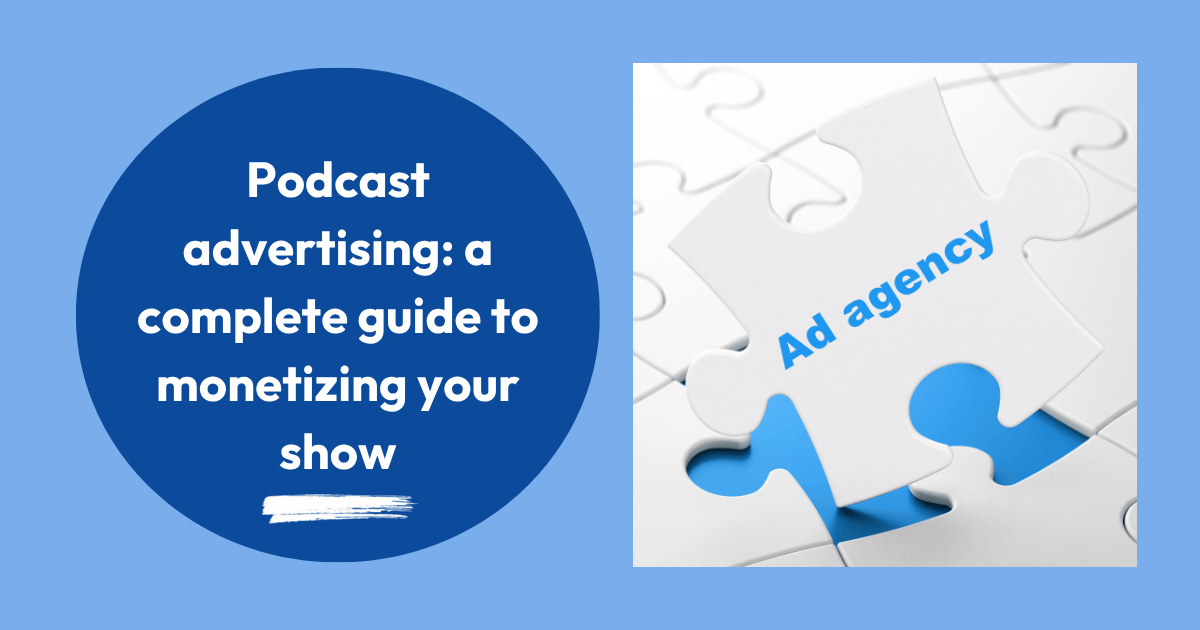
Podcast advertising is the most accessible path to monetization for independent creators — but success requires clear measurement, the right formats, and predictable inventory. In this guide we lay out the practical steps podcasters need to sell ads, negotiate rates, measure performance, and scale revenue without eroding listener trust.
Criteria For Sponsorship
Many sponsors and ad networks look for podcasts with at least 5,000 downloads per month or per episode, though some larger brands prefer shows with 10,000–20,000 downloads per episode. Smaller podcasts can also attract sponsors if they serve a tightly-defined niche and show high engagement or purchasing intent.
Sponsor will also look at your full reach (downloads, email list, social, YouTube).
Why advertising remains the first step to monetize
Most podcasters can begin selling ads once they have consistent downloads and a clear audience profile. Advertising scales: a single well-placed campaign can pay for hosting, production, and promotion. But advertising also demands discipline — transparent disclosure, consistent audience metrics, and creative ad placement that feels native to the show.
Ad formats and how they perform
- Host-read sponsorships — The host reads the ad during the episode. Highest engagement and conversion rates because the message leverages trust. Best for brand alignment and long-term sponsor relationships.
- Pre-recorded dynamic ads — Inserted at download time by an ad server. Easier to manage at scale and useful for short-term campaigns or programmatic buys.
- Branded content / custom episodes — Deep partnership where the sponsor co-produces an episode or series.
- Affiliate promotions — Use affiliate links and promo codes for measurable conversion.
- Memberships / premium content — Complementary revenue stream that reduces dependence on sponsors.
- Events and merchandise — Higher margin opportunities that require operational effort.
The key metrics advertisers care about
Advertisers evaluate podcasts using a few concrete numbers — make these easy to access in your media kit:
- downloads per episode (30-day post-release is standard)
- average completion rate
- audience demographics
- unique listeners and monthly uniques
- engagement signals (newsletter, social, surveys)
Typical CPM benchmarks (starting points):
- Host-read pre-roll: $15–$30 CPM
- Host-read mid-roll: $18–$50 CPM
- Host-read post-roll: $8–$20 CPM
- Dynamic ads: slightly lower CPMs depending on targeting and placement (around $5 cpm)
Preparing to sell ads — what advertisers expect
- A one-page media kit — downloads, audience profile, case studies, sample ad scripts.
- Standardized campaign options — reduce friction with clear packages.
- Reliable analytics — industry-accepted measurement and consistent windows.
- Ad timestamps and placement policy — be explicit about spacing and editorial integrity.
Negotiating and pricing — practical tactics
Start with a baseline CPM but offer performance incentives. Bundle inventory for discounts. Use short trial campaigns. Protect your brand with creative approval and clear brand-safety rules.
Measuring performance and proving ROI
Combine promo codes, custom landing pages, UTM parameters, and post-campaign reports. Deliver downloads, clicks, conversion rate, and listener feedback in a concise report.
Protecting audience trust
Prioritize host-read ads, limit ad load, always disclose sponsorships, and align sponsors with audience interests.
Operational checklist to start selling ads
- compile 3 months of download data and compute 30-day downloads per episode
- create a one-page media kit
- decide ad formats and standard rates
- set ad placement policy and creative review timeline
- build landing pages and promo codes for tracking
- list preferred payment terms and cancellation policy
- prepare a two-episode trial package for new sponsors
Scaling beyond direct sales
Use programmatic networks to fill unsold inventory while preserving premium host-read inventory for direct deals. Expand into sponsorship agencies or a sales team as demand grows.
Treat advertising as a product
Podcast advertising succeeds when podcasters treat inventory like a product — standardized, measured, and marketed. Start with one clear offer, prove it with a trial sponsor, and iterate based on metrics. Diversify revenue to stabilize income and keep editorial independence.
If you want, we can convert this guide into a one-page media kit template or draft three ad package options tailored to your download numbers.
Use the Sponsor Page From Podpage
You can use the Sponsor page in Podpage to promote your sponsors. This does three things:
1. It creates a single page for all of your sponsors which makes an easy to remember link.
2. It showcases your brand and website URL
3. It sends more traffic to your sponsors (which makes it easier to renew your contracts).


